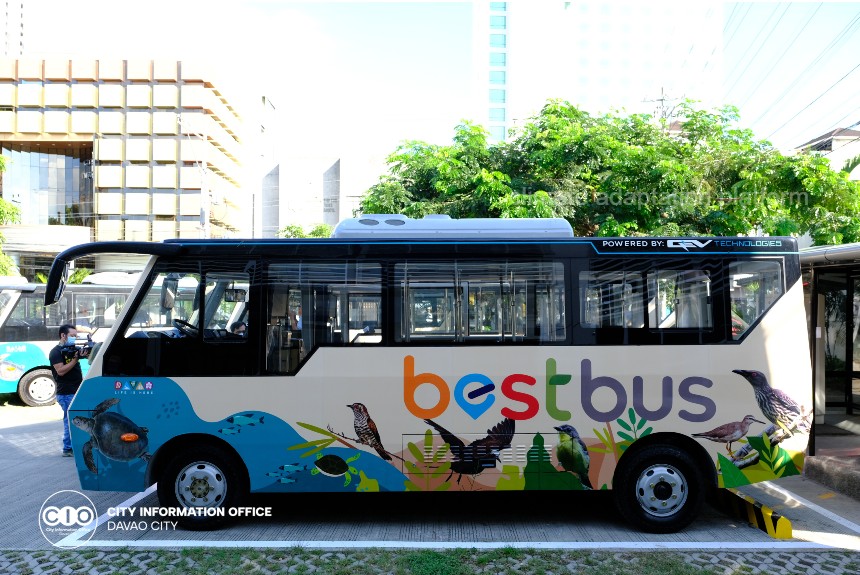The Asia Pacific region has witnessed rapid urbanisation growth in recent years, which is expected to continue in the following decades. With growing urbanisation comes a rise in energy consumption, increasing CO2 emissions levels. As emissions increase, it is contributing to the planet’s warming and causing more extreme weather events.
A 2020 report from Asia-Pacific Economic Cooperation notes that to address growing emissions from rapid urbanisation, Ministers attending the 9th APEC Energy Ministers Meeting in 2010 introduced low-carbon technologies in city planning as a solution which has consequently led to the development of APEC Low-Carbon Model Town (LCMT) Projects to create low-carbon communities and share best practices.
Davao City in the Philippines, along with Da Lat in Vietnam, was among the selected LCMTs, where a feasibility study of low-carbon interventions will be conducted. According to the report, the project is in the 2nd phase of the seven phases, which includes the development of the APEC Low-Carbon Town Indicator (LCT-I) that will be used to evaluate the low-carbon interventions.
A baseline assessment of the volunteer town, Davao, was also established in conjunction with the feasibility study. This includes analysing geographic and demographic data, administrative structure, local economy, basic infrastructure, energy and resources, land-use structure, policies, and targets for low-carbon strategies relevant to the volunteer town.
Davao City is highly urbanised on the island of Mindanao, located in the southern region of the Philippines. Davao City is the largest city in the country when it comes to land area and the third most populous after Quezon City and Manila; both cities are in the northern part of the country.
In 2017, Davao City’s energy consumption reached 25.7 million tons of oil equivalent (MTOE). This increased by 4% from its 2016 level of 24.7 MTOE. Transportation accounts for the largest share of energy consumption at 12 MTOE in 2017 (46.7%), followed by residential consumption at 9.2 MTOE (35.8 %), Commercial 4 MTOE (15.6%), and Agriculture, Forestry and Fishery sector at 0.5 MTOE (1.9%).
Davao’s energy consumption by percentage is similar to that of the entire country. Transport (47%), Residential (36%), Non-residential (15%), and Agriculture (2%).
The report laid out strategies proposed by the city to reduce its carbon emissions, including road rationing for private cars to reduce the number of vehicles on the road, which the report projects could reduce GHG emissions by 0.297 MTCO2 by 2030, which would otherwise be emitted under a business as usual scenario. Surprisingly, the report did not mention any use of electric vehicles or investments in EV infrastructure as a strategy to lower transportation sector emissions.
However, it lists strategies for other sectors, such as using waste in energy production, implementing energy efficiency building codes, and building energy management systems to reduce CO2 emissions.
According to ADB, Developing Asia must invest $1.7 trillion annually until 2030 if the region is to maintain growth, tackle poverty, and respond effectively to climate change.
To help the region promote safe, accessible, and green transport infrastructure, ADB announced on 29 June 2023 that it is extending a $1 billion loan to help establish a city-wide public transport project in Davao City, the first project in the country to deploy electric bus fleets at scale in support of the Philippines’ efforts to reduce greenhouse gases and promote climate adaptation action.
The Davao Public Transport Modernization Project, ADB’s largest road-based public transport project in the Philippines, is expected to serve as a pilot for overhauling the country’s public road transport system. The $1 billion loan from ADB will help the city procure about 1,100 electric and Euro 5-standard diesel-fueled buses with operations managed by the private sector under performance-based contracts. The new fleet is expected to reduce 60% of annual greenhouse gas emissions from public transport in Davao City, the country’s third-largest city by population.
The Best Bus fleet will cater to about 800,000 passengers per day. The project also includes the construction of around 1,000 bus stops with bright lighting and shelters, five bus depots and three bus terminals, and provide bus driving training for the new system.
The new fleet will cater to about 800,000 passengers per day. The project also includes the construction of around 1,000 bus stops with bright lighting and shelters, five bus depots and three bus terminals, and provide bus driving training for the new system.
The project will upgrade the city’s public transport experience via an intelligent transport system that includes a bus location system, automatic fare collection systems, and Wi-Fi connectivity in buses, terminals, and depots, the ADB article says.
PHOTO CREDIT: Thank you, Davao City Information Office, for supplying us with a photo of the Best Bus.
Sources:
APEC Low Carbon Model Town (LCMT) Project Dissemination Phase 2 Feasibility Study Report –Davao City, Philippines APEC Energy Working Group June 2020. Retrieved from https://www.apec.org/docs/default-source/publications/2020/6/apec-low-carbon-model-town-project-dissemination-phase-2—davao/220_ewg_apec-lcmt—feasibility-report_davao.pdf?sfvrsn=3b2a0a85_1
ADB Approves Landmark $1 Billion Loan to Support Low-Carbon Public Transport in the Philippines. (2023, 29 June). ADB. Retrieved from https://www.adb.org/news/adb-approves-landmark-1-billion-loan-support-low-carbon-public-transport-philippines



Leave a Reply